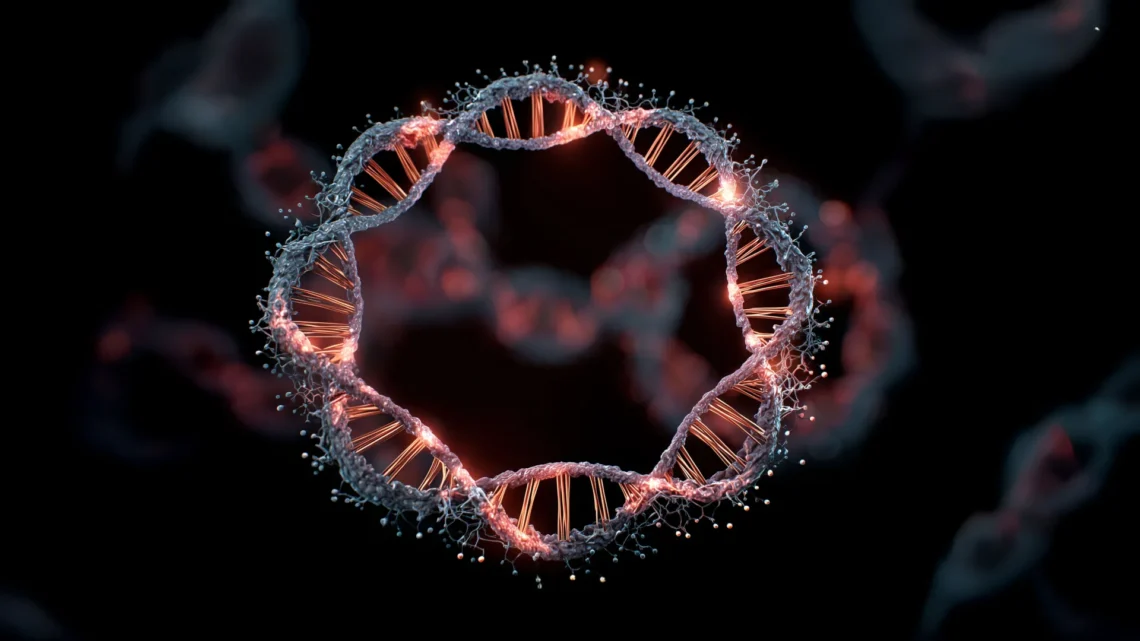Understanding the Role of Extrachromosomal DNA in Glioblastoma
An international team of scientists has discovered that extrachromosomal DNA (ecDNA), which are rogue rings of DNA that exist outside of chromosomes, can significantly contribute to the proliferation of glioblastoma—a highly aggressive and common form of adult brain cancer. This groundbreaking research may lead to innovative methods for early diagnosis, enhanced tracking of disease progression, and more effective treatment strategies for glioblastoma.
Key Findings on ecDNA
The findings, published on September 8 in Cancer Discovery, are the first to indicate that ecDNA rings harboring cancer-promoting genes often emerge in the initial stages of glioblastoma development—sometimes even before tumor formation is fully established. This early appearance may catalyze the cancer’s swift growth, adaptability, and resistance to treatment.
The study was spearheaded by Dr. Benjamin Werner from Queen Mary University of London, Professor Paul Mischel from Stanford University, and Professor Charlie Swanton from The Francis Crick Institute. These scientists are integral members of the Cancer Grand Challenges team eDyNAmiC.
Tackling Cancer’s Toughest Challenges
Glioblastoma poses considerable treatment challenges, with a median survival rate lingering around just 14 months and little improvement over the past several decades. There is an urgent need for novel approaches aimed at earlier detection and enhanced treatment options.
Emerging data indicates that ecDNA plays a potentially critical role in various adult and pediatric cancers, including glioblastoma, although its functions remain multifaceted and enigmatic. The Cancer Grand Challenges initiative—established by Cancer Research UK and the National Cancer Institute—is focused on deciphering the complexities of ecDNA. In 2022, they allocated funds to team eDyNAmiC—a $25 million international consortium bringing together experts in cancer research, evolutionary biology, computer science, and mathematics—to explore the role of ecDNA and develop targeting strategies. This recent study serves as a significant step forward in their ongoing research.
Excavating a Tumor’s Past
In the current study, team eDyNAmiC collaborated with other researchers to synthesize genomic and imaging data from glioblastoma patients, using advanced computational modeling to investigate the evolution of ecDNA over time and spatially within tumors.
“We approached the study of tumors similarly to archaeologists. Instead of relying on a single sample, we excavated various sites around the tumor to create computational models that elucidate their evolution. We simulated numerous scenarios to reconstruct the emergence and spread of early ecDNAs, thereby offering a clearer understanding of the tumor’s origins and progression,” explains senior author Dr. Benjamin Werner, a group leader at the Barts Cancer Institute, Queen Mary University of London.
The Significance of EGFR in Tumor Aggression
The analysis highlighted that a majority of ecDNA rings contained the EGFR gene, recognized as a significant driver of cancer. The presence of EGFR ecDNA was noted early in the cancer’s evolution, occasionally appearing before tumor formation in certain patients. Additionally, this gene frequently acquired mutations, including the EGFRvIII variant, which increased the cancer’s aggressiveness and resistance to therapeutic interventions.
A Window of Opportunity for Early Intervention
“These subtle mechanisms highlight a potential window for detecting and treating the disease in the interval between the initial detection of EGFR ecDNA and the onset of these more aggressive variants,” suggests Dr. Magnus Haughey, a postdoctoral researcher in Dr. Werner’s group and one of the lead authors of the paper. “Developing a reliable test for early EGFR ecDNA—potentially through a simple blood test—could permit timely intervention before the disease becomes more challenging to manage.”
The study further confirmed that ecDNA can simultaneously carry multiple cancer genes, each influencing tumor behavior and treatment responses in unique ways. This underscores the potential advantages of personalized treatment regimens based on a tumor’s specific ecDNA profile.
Future Directions in Cancer Research
Despite these advancements, several mysteries about ecDNA remain. The researchers aim to examine how various treatments impact the quantity and types of ecDNA present in glioblastoma. Team eDyNAmiC will extend its investigations to explore the role of ecDNAs across different cancer types, seeking new opportunities for earlier diagnosis, precise tracking, and innovative treatment strategies.
Charlie Swanton, Deputy Clinical Director and head of the Cancer Evolution and Genome Instability Laboratory at The Francis Crick Institute, emphasizes:
“These findings indicate that ecDNA is not merely a passive element in glioblastoma; instead, it acts as a pivotal driver early in the disease’s development. By tracing the timing and nature of ecDNA emergence, we could facilitate earlier detection and therapeutic interventions before the cancer becomes aggressive and treatment-resistant. I am hopeful this insight will usher in a new era for diagnosing, monitoring, and managing this devastating cancer.”
Paul Mischel, MD, the Fortinet Founders Professor and professor and vice chair of research in the Pathology Department at Stanford Medicine, adds:
“This research provides essential insights into the role of ecDNA in tumoral development and progression. Previous studies from our collaborative team have shown that ecDNA can manifest early in tumor development, including pre-cancerous stages, and subsequently drive tumor progression and treatment resistance. The current findings in glioblastoma highlight early ecDNA events that could prove to be actionable, marking a possibility for earlier detection and intervention based on ecDNA.”
Dr. David Scott, Director of Cancer Grand Challenges, states:
“This study exemplifies the bold and innovative science that the Cancer Grand Challenges initiative aims to support. By unraveling the evolutionary history of ecDNA in glioblastoma, team eDyNAmiC not only deepens our understanding of one of the most formidable cancers but also shines a light on new paths for earlier detection and treatment. This serves as a powerful reminder of the potential benefits derived from interdisciplinary collaboration in addressing critical challenges in cancer research.”
Key Health Takeaway
The emergence of extrachromosomal DNA (ecDNA) in glioblastoma significantly influences tumor aggressiveness and treatment resistance. Early detection of ecDNA may provide a critical opportunity for timely intervention, potentially improving patient outcomes in this challenging cancer.





